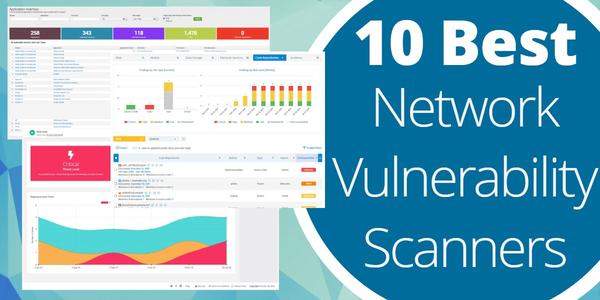Website scanners are essential technology in thwarting cybersecurity attacks against web applications. And these types of attacks are a major problem. According to Forrester Research, web applications are a leading vector of incursion.
Worse, such attacks have grown steadily over the past few years. And even more than software vulnerabilities – which offer a huge attack vector – it is web applications that are the usual avenue of external entry.
To help protect against these attacks, let’s take a look at the website scanner market, then do a deep dive into the leading website scanner software.
Understanding the Website Scanning Tools Market
There is often a confusion about the various tools in the IT security arsenal. Terms such as website scanner, vulnerability scanning tool, website vulnerability scanner, and web application scanner are used interchangeably. But this is an error.
Vulnerability scanners and website vulnerabilityscanners are different.Awebsite scanner does a remote scan of a website and often provides a graphic that can be included to show the site has been scanned.Vulnerability scanners, on the other hand, scan the IT network, endpoints, and infrastructure as they look for vulnerabilities.
Also see: 5 Cloud Security Trends in 2022
What is Vulnerability Scanning?
Vulnerability scanners monitor applications and networks constantly to identify security vulnerabilities. They work in a variety of ways.
Many of them maintain an up-to-date database of known vulnerabilities and conduct scans to identify possible risks and exploits. They are typically used by IT to test applications and networks against known issues as well as in helping to identify new vulnerabilities. They also provide reports based on their analysis of known vulnerabilities and potential new exploits.
Vulnerability scanning, then, deals with the inspection of points of potential exploit to identify security holes. Regular scans detect and classify system weaknesses. In some cases, the application offers predictions about the effectiveness of countermeasures. Scans can be performed by the IT department or via a managed service.
Typically, scans are done against a database of information about known security holes in services and ports, as well as anomalies in packet construction, missing patches, and paths that may exist to exploitable programs or scripts.
Some vulnerability scanners detect vulnerabilities and suggest possible remedies. Others attempt remediation and mitigation across the environment. Some provide strong support for audits and compliance via reporting, or are geared towards security standards such as PCI DSS, Sarbanes-Oxley, or HIPAA. Others specialize in the discovery of web-based holes or problems with authentication credentials, key-based authentication, and credential vaults.
Also see: Secure Access Service Edge: Big Benefits, Big Challenges
What Does a Website Vulnerability Scanner Do?
A website vulnerability scanner (a.k.a. a website scanner or web application scanner) scans through the pages of a website or web application to detect security vulnerabilities. Such tools are looking for security issues like cross-site scripting, cross-site request forgery (CSRF) or SQL injection. These tools automate the scanning of web applications and test them to search for common security problems. Some offer advanced functions to dive deeper into applications to look for difficult-to-find bugs such as asynchronous SQL injection and blind service-side request forgery (SSRF).

The techniques employed by web scanners include application spidering, applications crawling, discovery of default content as well as common content, and probing web applications for common vulnerabilities. Scanning can be done actively or passively. The passive approach does non-intrusive checks that are useful, but often not thorough enough. Active scans simulate attacks on websites and web applications. Some tools also make use of access permissions to see if further vulnerabilities can be unearthed.
Also see: 5 Ways Social Media Impacts Cybersecurity
Top Website Scanning Tools
We will include some examples of each type – both vulnerability scanners as well as web application scanners. But we will strongly favor the latter category. Here are our top picks, in no particular order:
Burb
The web vulnerability scanner within Burp Suite uses research from PortSwigger to help users find a wide range of vulnerabilities in web applications automatically. Sitting at the core of Burp Suite Enterprise EditionandBurp Suite Professional, it is used by more than 60,000 users across 15,000 organizations.
Key Differentiators
Qualys Web Application Scanner
The Qualys Cloud Platform, combined with its cloud agents, virtual scanners, and network analysis capabilities bring together key elements of an effective vulnerability management program into a single app unified by orchestration workflows.
Key Differentiators
Nessus
Nessus by Tenable is a widely used vulnerability assessment tool. It is often used by experienced security teams. It can be used in conjunction with pen testing tools, providing them with areas to target and potential weaknesses to exploit. It is used in vulnerability assessments by tens of thousands of organizations. Nessus came to life twenty years back as an open-source tool but has morphed into a proprietary tool.
Key Differentiators
Acunetix Web Vulnerability Scanner
Acunetix by Invicti scans web-based applications. Its multi-threaded scanner can crawl across hundreds of thousands of pages rapidly and it also identifies common web server configuration issues. It is particularly good as scanning WordPress. Acunetix automatically creates a list of all websites, applications, and APIs, and keeps it up to date.
Key Differentiators
Netsparker
Netsparker is a web vulnerability management solution that focuses on scalability, automation, and integration. The suite is built around the web vulnerability scanner and can be integrated with third party tools. Operators don’t need to be knowledgeable in source code.
Key Differentiators
Syxsense
Syxsense is a network vulnerability scanner. It is not a web application scanner, but it can scan web servers to make sure they are patched, and does basic checks like making sure the site has a valid SSL cert. Syxsense also adds patch management, and basic IT management as part of its suite.
Key Differentiators
Intruder
Intruder is a cloud-based vulnerability scanner that concentrates on perimeter scanning. It performs over 10,000 security checks and is strong at discovering new vulnerabilities. It runs emerging threat scans for newly discovered vulnerabilities. Results are emailed to IT and available on the dashboard. It uses an enterprise-grade scanning engine, the same one used by large enterprises and governments.
Key Differentiators
HCL AppScan
AppScan has several versions for the enterprise, the cloud, and more. AppScan on Cloud, for example, is a cloud-based application security solution that provides AppScan as a service. AppScan Enterprise enables IT to perform large-scale application scanning, mitigate vulnerabilities, and achieve regulatory compliance.
Key Differentiators
Also see: Tech Predictions for 2022: Cloud, Data, Cybersecurity, AI and More









